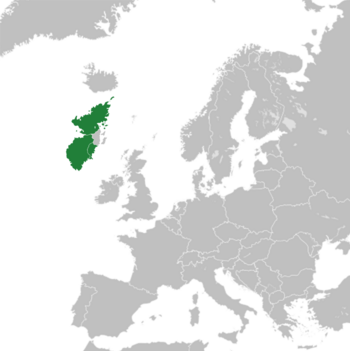Nelbec countries: Difference between revisions
(Created page with "{{WIP}} {{About|the cultural region|the island|Nelbecia|the empire that lasted from 1884 to 1921|Nelbec Empire}} {{Infobox country |conventional_long_name = Nelbec countries...") |
mNo edit summary |
||
| Line 175: | Line 175: | ||
}} | }} | ||
The '''Nelbec countries''' or the '''Nelbecs''' are a geographical and cultural region in the [[Nelborne]] where [[Nelbec languages]] are spoken and where [[Nelbec people]] inhabit. Nelbecia mainly consists of 3 countries: [[Alquiya]], [[Lormotia]], and [[Seketan]]. Most of the island of [[ | The '''Nelbec countries''' or the '''Nelbecs''' are a geographical and cultural region in the [[Nelborne]] where [[Nelbec languages]] are spoken and where [[Nelbec people]] inhabit. Nelbecia mainly consists of 3 countries: [[Alquiya]], [[Lormotia]], and [[Seketan]]. Most of the island of [[Nelbecia]] is considered to be Nelbec with the notable exception of [[New Svealand]], which is considered {{wp|Nordic countries|Nordic}}. | ||
Little is known about the history of the Nelbec states before the 6th century. What is known is that prehistoric cultures began to form in Seketan during the Neolithic period; Nelbec civilizations and dynasties began to emerge during the {{wp|Classical era}}. It was around the 8th and 9th centuries when separate Secenic, Alquet, and Lormot Nelbec peoples began to form their own united nationstates. The kingdoms of Seketan, Alquiya, and Lormotia emerged around this time, succeeding previous personal unions ruled by single dynasties. The kingdoms over the course of several centuries contested over various lands in the [[Nelborne]]. The Nelbec countries also frequented wars with other European powers, mostly with the Danish and Swedish empires. The [[Christianization of Nelbecia]] contributed to the development of organized linguistics and overall organization of the Nelbec kingdoms. The Alquiyan entered into a personal union with the Seketese kingdom in the 18th century; a compromise resulted in the establishment of the [[Nelbec Empire]] which would later become a power that would once control the lands of Greenland, Iceland, the Faroe islands, and several other smaller landmasses. The empire fell in 1919 and the Nelbec states endured several wars such as the [[Alquiyan Civil War|Alquiyan]] and [[Seketese Civil War|Seketese]] civil wars, [[Great Nelborne War]], and {{wp|World War II}}. | Little is known about the history of the Nelbec states before the 6th century. What is known is that prehistoric cultures began to form in Seketan during the Neolithic period; Nelbec civilizations and dynasties began to emerge during the {{wp|Classical era}}. It was around the 8th and 9th centuries when separate Secenic, Alquet, and Lormot Nelbec peoples began to form their own united nationstates. The kingdoms of Seketan, Alquiya, and Lormotia emerged around this time, succeeding previous personal unions ruled by single dynasties. The kingdoms over the course of several centuries contested over various lands in the [[Nelborne]]. The Nelbec countries also frequented wars with other European powers, mostly with the Danish and Swedish empires. The [[Christianization of Nelbecia]] contributed to the development of organized linguistics and overall organization of the Nelbec kingdoms. The Alquiyan entered into a personal union with the Seketese kingdom in the 18th century; a compromise resulted in the establishment of the [[Nelbec Empire]] which would later become a power that would once control the lands of Greenland, Iceland, the Faroe islands, and several other smaller landmasses. The empire fell in 1919 and the Nelbec states endured several wars such as the [[Alquiyan Civil War|Alquiyan]] and [[Seketese Civil War|Seketese]] civil wars, [[Great Nelborne War]], and {{wp|World War II}}. | ||
Revision as of 06:29, 5 March 2020
This article is incomplete because it is pending further input from participants, or it is a work-in-progress by one author. Please comment on this article's talk page to share your input, comments and questions. Note: To contribute to this article, you may need to seek help from the author(s) of this page. |
Nelbec countries | |
|---|---|
 Location of the Nelbec countries | |
| Languages | |
| Composition | 3 countries |
| Currency | |
The Nelbec countries or the Nelbecs are a geographical and cultural region in the Nelborne where Nelbec languages are spoken and where Nelbec people inhabit. Nelbecia mainly consists of 3 countries: Alquiya, Lormotia, and Seketan. Most of the island of Nelbecia is considered to be Nelbec with the notable exception of New Svealand, which is considered Nordic.
Little is known about the history of the Nelbec states before the 6th century. What is known is that prehistoric cultures began to form in Seketan during the Neolithic period; Nelbec civilizations and dynasties began to emerge during the Classical era. It was around the 8th and 9th centuries when separate Secenic, Alquet, and Lormot Nelbec peoples began to form their own united nationstates. The kingdoms of Seketan, Alquiya, and Lormotia emerged around this time, succeeding previous personal unions ruled by single dynasties. The kingdoms over the course of several centuries contested over various lands in the Nelborne. The Nelbec countries also frequented wars with other European powers, mostly with the Danish and Swedish empires. The Christianization of Nelbecia contributed to the development of organized linguistics and overall organization of the Nelbec kingdoms. The Alquiyan entered into a personal union with the Seketese kingdom in the 18th century; a compromise resulted in the establishment of the Nelbec Empire which would later become a power that would once control the lands of Greenland, Iceland, the Faroe islands, and several other smaller landmasses. The empire fell in 1919 and the Nelbec states endured several wars such as the Alquiyan and Seketese civil wars, Great Nelborne War, and World War II.
The Nelbec states today are developed countries with relatively high standards of living. Cooperation between the countries is frequent with all member states being members of several local and international organizations, including the Council of Europe, Nelbec Council, and Nelborne Union. None of the Nelbec countries are part of the European Union and there is debate in each country on whether to join or not.